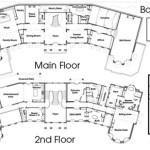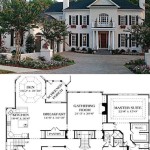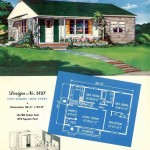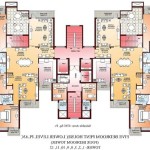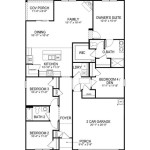Tiny House On Wheels Plans: A Guide to Free Resources and Design Considerations
The allure of minimalist living and financial freedom has propelled the tiny house movement into the mainstream. Among the various types of tiny homes, the "Tiny House On Wheels" (THOW) stands out for its mobility and adaptability. Building a THOW requires meticulous planning, and a crucial component of this planning is the acquisition of comprehensive and accurate blueprints. While professional architectural plans provide the most assurance of structural integrity and adherence to building codes, numerous free resources offer a starting point for the DIY builder. This article explores the landscape of free THOW plans, their limitations, and essential considerations when embarking on a tiny house project.
The primary advantage of a THOW lies in its mobility. Built on a trailer, it bypasses some of the stringent zoning regulations applicable to permanent structures. However, this mobility introduces unique engineering challenges. The house must withstand the stresses of travel, necessitating robust construction methods and a thorough understanding of weight distribution. Furthermore, the limited space demands ingenious design solutions to maximize functionality and comfort. Therefore, obtaining suitable plans, whether paid or free, is a vital first step.
Accessing free THOW plans can be a boon for budget-conscious builders. These plans range from basic sketches to more detailed drawings. However, it is imperative to approach free plans with caution. Not all free plans are created equal, and many lack the crucial details needed for sound construction. Careful evaluation of the plan's completeness, accuracy, and suitability for one's skill level is paramount. Scrutinizing user reviews and seeking feedback from experienced builders can offer valuable insights.
Understanding the Landscape of Free THOW Plans
Free THOW plans are readily available through various online platforms. These sources often include websites dedicated to tiny house living, online forums, and file-sharing platforms. While the price point is attractive, it is critical to understand the typical limitations associated with such resources.
Many free plans are conceptual in nature. They provide a general layout and aesthetic vision without detailed structural information or specific material lists. These plans can serve as inspiration for a custom design but are insufficient for actual construction. They often lack crucial details regarding framing dimensions, electrical wiring diagrams, plumbing layouts, and insulation strategies. Relying solely on these conceptual plans can lead to significant errors and potentially unsafe construction practices.
Another common issue is the absence of engineering certifications. Professional engineering stamps are crucial for ensuring that the structure meets safety standards and can withstand wind loads, seismic activity, and the stresses of transportation. Free plans rarely include these certifications, placing the responsibility for structural integrity entirely on the builder. This is particularly important for THOWs, as they are subject to dynamic forces during movement.
The level of support provided is also a significant consideration. Paid plans typically come with customer support, allowing builders to ask questions and receive guidance during the construction process. Free plans, on the other hand, generally offer minimal or no support. This can be a significant hurdle for novice builders who may encounter unforeseen challenges during construction.
Key Considerations Before Using Free THOW Plans
Before committing to any free THOW plans, a thorough assessment is crucial to mitigate potential risks. Several factors should influence the decision-making process, ensuring a safe and structurally sound final product.
First, evaluate one's own skill level and experience. Building a THOW is a complex undertaking that demands proficiency in carpentry, electrical wiring, plumbing, and other construction trades. If experience is limited, simpler designs with fewer intricate details are recommended. Alternatively, consider taking courses or workshops to enhance one's skill set before commencing the project.
Second, carefully examine the plan's completeness. A comprehensive plan should include detailed floor plans, elevations, framing diagrams, electrical and plumbing layouts, material lists, and step-by-step instructions. If any of these elements are missing, the plan is likely incomplete and may require significant supplementation with additional research and design work.
Third, assess the plan's adherence to local building codes and regulations. THOWs, despite their mobility, are subject to various regulations pertaining to their size, weight, and safety features. These regulations vary depending on the location where the THOW will be parked or traveled. Consulting with local building officials to understand the applicable codes is essential before starting construction. Free plans may not be designed to meet these specific requirements, necessitating modifications to ensure compliance.
Fourth, scrutinize the structural integrity of the design. Pay close attention to the framing methods, the size and spacing of structural members, and the load-bearing capacity of the trailer. If unsure about the structural soundness of the design, consult with a structural engineer. An engineer can review the plans and provide recommendations for reinforcing the structure to ensure its safety and durability.
Supplementing Free Plans with Professional Expertise
Even if free THOW plans seem promising, seeking professional guidance is strongly recommended. Consulting with architects, engineers, and experienced builders can significantly enhance the project's success and mitigate potential risks.
An architect can review the plans and provide feedback on the overall design, functionality, and aesthetics. They can also help optimize the layout to maximize space utilization and create a comfortable living environment. Furthermore, an architect can assist in adapting the plans to meet specific needs and preferences.
A structural engineer plays a vital role in ensuring the THOW's structural integrity. They can analyze the plans, assess the load-bearing capacity of the frame, and recommend modifications to strengthen the structure. An engineer can also provide certification that the design meets relevant building codes and safety standards.
Finally, consulting with experienced THOW builders can provide invaluable practical insights. They can share their knowledge of construction techniques, materials selection, and common pitfalls to avoid. Their hands-on experience can prove invaluable in navigating the challenges of building a THOW.
By carefully evaluating free THOW plans, considering one's skill level, adhering to building codes, and seeking professional guidance, individuals can embark on their tiny house journey with greater confidence and assurance. While free plans offer a cost-effective starting point, prioritizing safety and structural integrity remains paramount for a successful and sustainable tiny house living experience.

Free Tumbleweed Diy Tiny House Plans Houses

Tiny House Floor Plans 32 Home On Wheels Design

Escape Traveler A Tiny House On Wheels That Comfortably Sleeps 6 Floor Plans

27 Adorable Free Tiny House Floor Plans Craft Mart

224 Sq Ft Tiny House On Wheels By Living Homes Small Diy

Tiny House Plans The Project

Elegant Tiny House Plans On Wheels Free 4 Conclusion Trailer Floor

How To Pick The Best Tiny House On Wheels Floor Plan Wayward Home

Free Preview Of 101 Tiny House Designs Book By Michael Jaen
:max_bytes(150000):strip_icc()/__opt__aboutcom__coeus__resources__content_migration__treehugger__images__2018__03__tiny-house-macy-miller-12a993a38eda4913a0e8ab1b231e79d3.jpg?strip=all)
Want To Build A Tiny House Here S Where You Can Find Floor Plans



